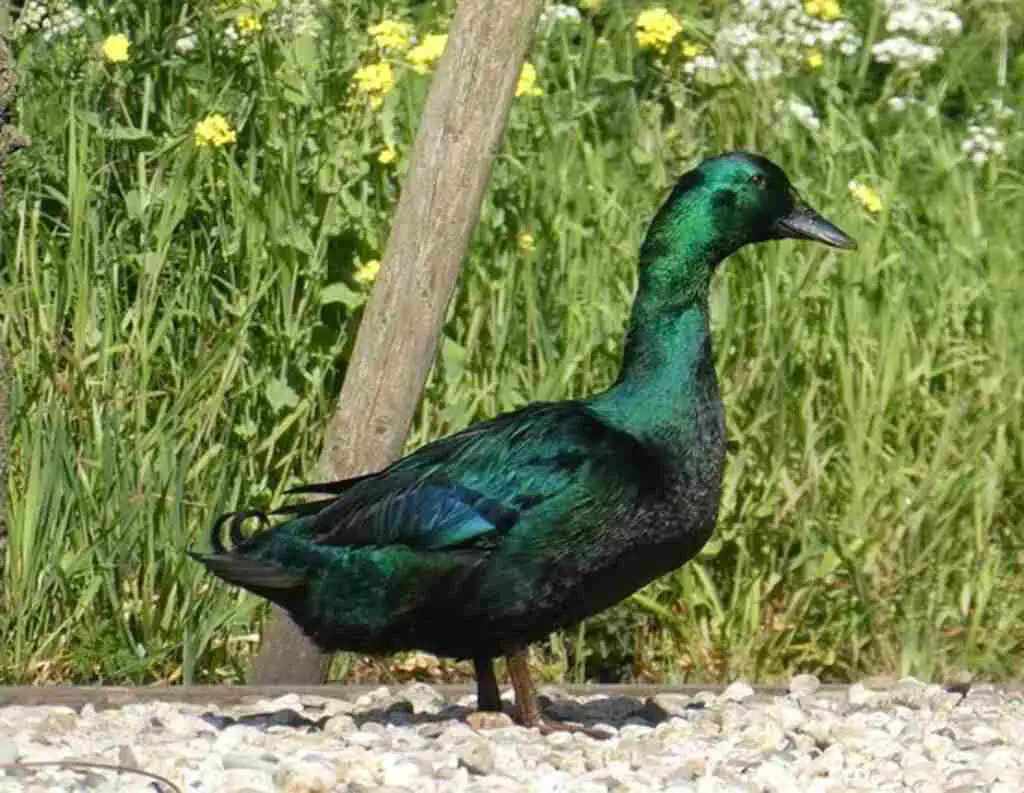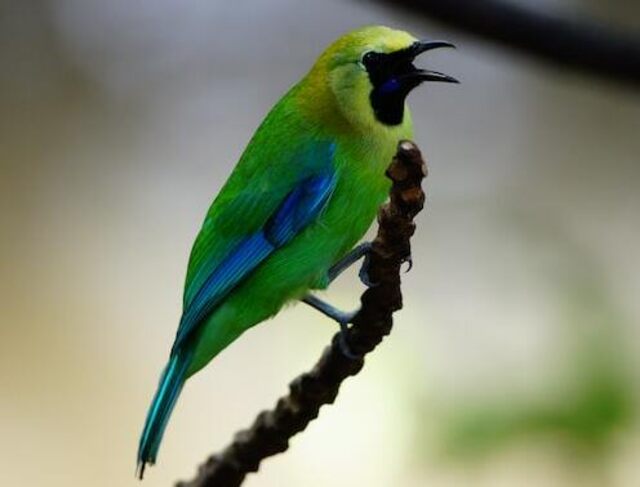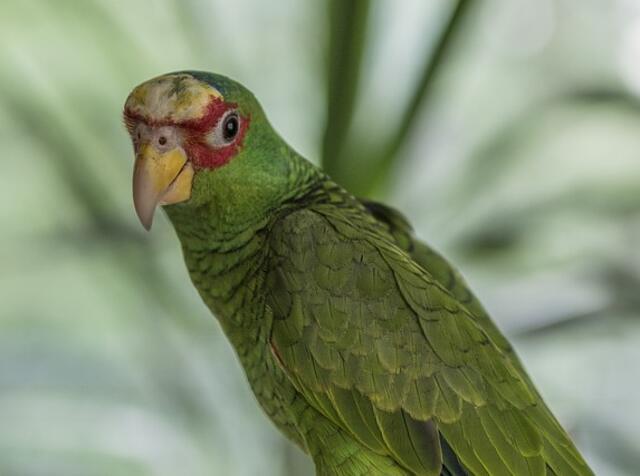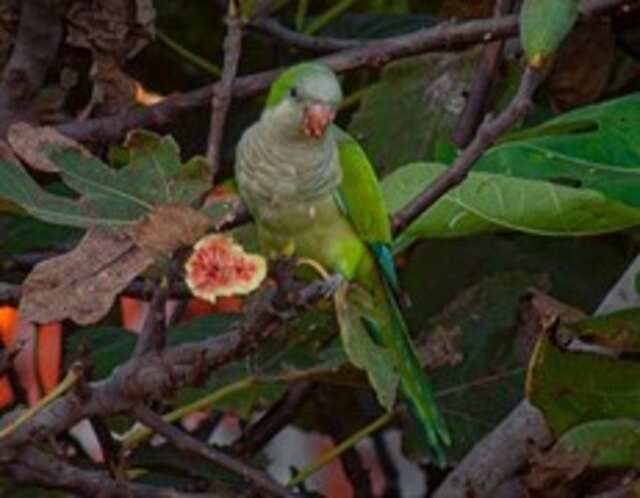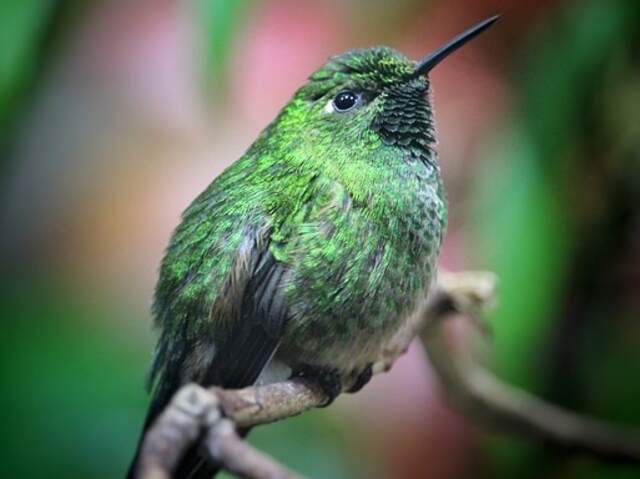Welcome to the captivating world of green birds! Prepare to be amazed as we take a closer look at the stunning beauty of 25 bird species that showcase the color green in their feathers. In this article, we will delve into the unique features, habitats, and behaviors of these mesmerizing creatures, uncovering the reasons behind their vivid green plumage.
From the tropical rainforests of South America to the lush forests of Asia, we will embark on an incredible journey to discover the secrets of these remarkable birds. So, let’s buckle up and get ready to explore the extraordinary world of stunning birds with green feathers like never before!
Table of Contents
- 1 Why Green Feathers Are Unique?
- 2 Why Birds Have Green Feathers?
- 3 Functions of Green Feathers
- 4 Beautiful Birds with Green Feathers!
- 4.1 Amazon Parrot
- 4.2 Cuban Tody
- 4.3 Green Turaco
- 4.4 Green Honeycreeper
- 4.5 Green Catbird
- 4.6 Superb Fruit Dove
- 4.7 Budgerigar
- 4.8 Fig Parrot
- 4.9 Pacific Parrotlet
- 4.10 Green Heron
- 4.11 Tennessee Warbler
- 4.12 Rose-ringed Parakeet
- 4.13 Green Jay
- 4.14 Mallard Duck
- 4.15 Purple Gallinule
- 4.16 Northern Shoveler
- 4.17 Anna’s Hummingbird
- 4.18 Rosy-faced Lovebird
- 4.19 Quaker Parrot
- 4.20 Green-backed Firecrown
- 4.21 Green Bee-Eater
- 4.22 Shining Green Hummingbird
- 4.23 Japanese White-eye
- 4.24 Crimson-collared Grosbeak
- 4.25 Green Broadbill
- 4.26 Rivoli’s Hummingbird
- 4.27 Green Kingfisher
- 5 Conclusion
- 6 Author
Why Green Feathers Are Unique?
Green feathers are absolutely fascinating! They’re not just your ordinary, run-of-the-mill pigmentation job. Oh no, they’re way more complex than that! The structural arrangement of the feathers themselves creates this epic green coloration that reflects and absorbs light in such a way that it practically glows.
This structural coloration is the result of the way microscopic structures within the feathers interact with light to create this mesmerizing green hue. It’s like a science experiment happening right on the bird’s body!
And let’s not forget the extra functionalities that come with these green feathers, like camouflage, social communication, and mate attraction. All of this combined makes green feathers truly unique and absolutely captivating!
Why Birds Have Green Feathers?
Green feathers in birds serve several purposes and are a fascinating subject of study. The green coloration is not just a result of pigmentation, but also the structural arrangement of the feathers. The arrangement allows feathers to reflect and absorb light in a way that creates a green color.
Moreover, the green color can be a result of sexual selection, where birds with brighter or more unique green plumage have a better chance of attracting mates.
For instance, the Green Peafowl has bright green feathers with striking patterns that males use to attract females during courtship displays. Understanding the various functions of green feathers in birds can provide valuable insights into their behavior, ecology, and evolution.
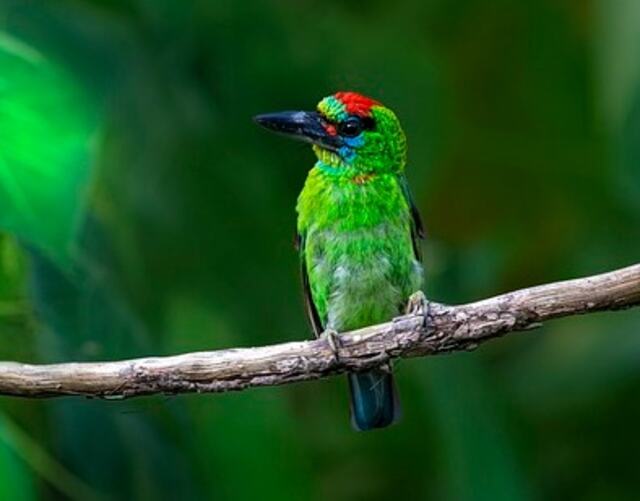
Functions of Green Feathers
Camouflage
Green feathers can be an essential tool for birds to blend into their natural environment and avoid detection by predators. For instance, the Green Heron’s green feathers blend perfectly with the surrounding vegetation, allowing it to remain hidden while it stalks its prey.
Other birds, like the Green Warbler, also use their green plumage to blend in with the leaves and trees of their forest habitats. The effectiveness of green feathers as camouflage can vary depending on the specific environment, lighting conditions, and predator-prey dynamics.
Nonetheless, green feathers remain a valuable adaptation for many bird species and have helped them survive and thrive in their habitats.
Communication
Green feathers can serve as a powerful tool for communication among birds. In certain species, such as the Quaker Parrot, green feathers can be used to signal not only aggression and territoriality but also submission and attraction.
The vibrant green coloration of a bird’s plumage can convey important information to others in its flock, helping to establish social hierarchies and facilitate mating opportunities.
This method of communication through visual cues is particularly important for birds living in densely populated areas, where vocalizations can easily become lost in the noise.
Through the strategic use of their green feathers, birds can convey complex messages without uttering a single chirp.
Attracting Mates
In the avian world, green feathers are often associated with attracting mates. Many bird species, such as the Green-backed Firecrown, possess strikingly bright green feathers that are highly coveted by potential mates.
These vibrant feathers serve as an indication of good health and genetic fitness, making them an attractive trait for partners seeking to produce healthy offspring.
It is not uncommon for male birds to use their green feathers to woo female birds during courtship displays, showing off their vibrant plumage to capture their attention.
Overall, green feathers play a crucial role in the complex and fascinating world of avian mate attraction.
Thermoregulation
Thermoregulation is a critical process for birds, especially those living in areas with extreme temperature fluctuations. Interestingly, green feathers can also play a vital role in this process. Birds with green plumage may use their feathers to regulate their body temperature by either absorbing or reflecting sunlight.
In colder environments, green feathers can help birds to absorb sunlight, which can then be converted into heat to keep them warm. On the other hand, in hotter environments, green feathers can reflect sunlight to prevent overheating.
This ability to adjust their feather’s reflective properties is essential for birds to maintain a stable body temperature, ensuring their survival in diverse environments.
So, green feathers are not just for attracting mates or camouflage, but also play an important role in helping birds to stay cool or warm.
Beautiful Birds with Green Feathers!
Amazon Parrot
The Amazon Parrot is a remarkable bird known for its intelligence, playful personality, and striking green feathers. This species can be found throughout Central and South America, as well as the Caribbean. Their preferred habitats include tropical and subtropical forests, as well as savannas and grasslands.
In the wild, Amazon Parrots feed on a varied diet of fruits, seeds, nuts, and insects. The green coloration of their feathers serves both as camouflage and a means of attracting mates during breeding season. Additionally, their feathers may play a role in thermoregulation, helping them to regulate their body temperature in their warm, tropical habitats.
Cuban Tody
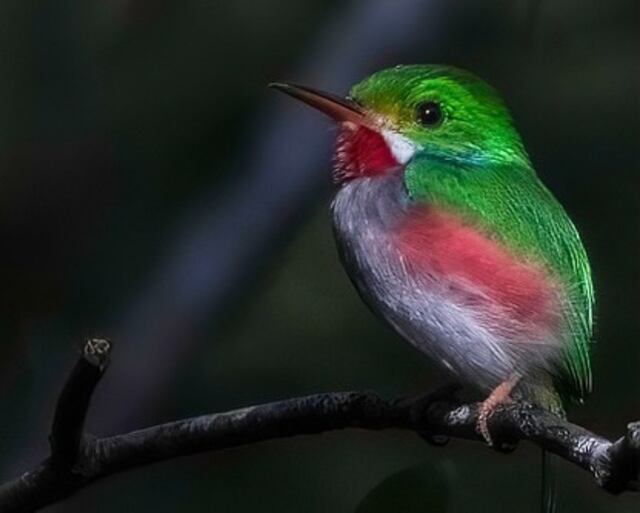
The Cuban Tody, also known simply as the Cuban Tody, is a small bird that is endemic to Cuba and the Isla de la Juventud. It is one of the smallest birds found in Cuba, measuring about 10 cm (4 inches) in length and weighing less than half an ounce. The bird has a distinctive appearance with a round body, a short tail, and a relatively large head with a short, slightly curved bill. The Cuban Tody is predominantly green, with a bright red throat and a yellow-orange belly, and green wings and tail that have a bluish tint.
The bird’s bright coloration, especially the red throat, serves as a signal of its territoriality and also attracts potential mates during breeding season. The Cuban Tody can be found in a variety of habitats, including forests, gardens, and coffee plantations. It primarily feeds on insects, spiders, and occasionally small fruits, which it hunts from a perch or by hovering in midair. Its green feathers help it blend into the foliage, making it difficult for predators to spot.
Green Turaco
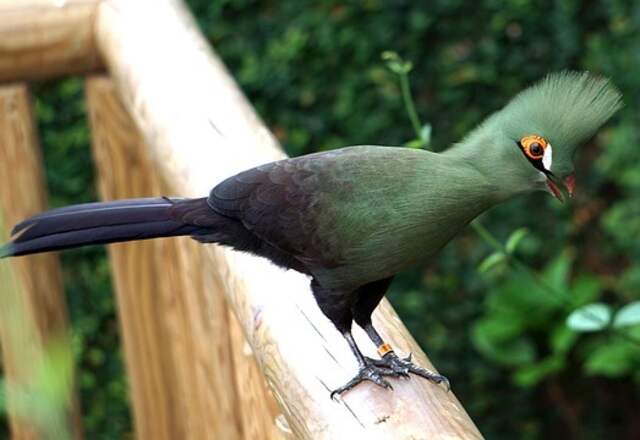
The Green Turaco is a stunning bird with vibrant green feathers and a distinctive crest atop its head. Its bright green coloration makes it easy to identify in the wild. This bird is native to the forests of Africa, with a distribution range that spans from Guinea to Uganda.
The Green Turaco prefers to live in the upper canopy of the forest, where it feeds on fruits, leaves, and insects. Its green feathers serve as camouflage in its leafy habitat, helping it to blend in and avoid predators. The Green Turaco’s feathers also play a role in courtship displays, making them an important aspect of its reproductive behavior.
Green Honeycreeper
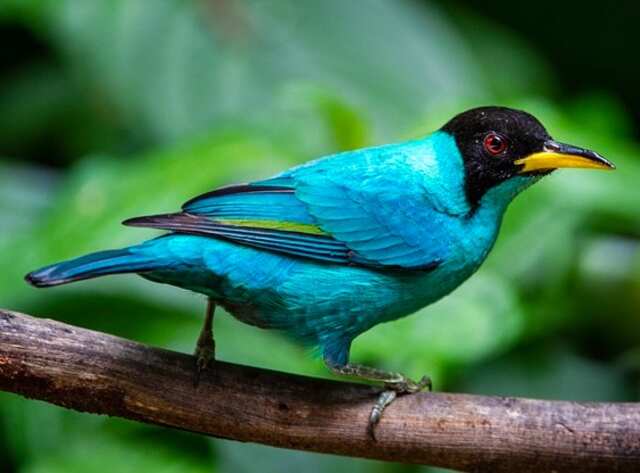
The Green Honeycreeper, also known as Chlorophanes spiza, is a small passerine bird found in the tropical regions of Central and South America. With its vibrant green plumage, the Green Honeycreeper is a sight to behold. The males have a metallic green color, while the females have a more olive-green hue. They inhabit the canopy of rainforests, edges of forests, and plantations, where they can easily access their primary diet of fruits, nectar, and insects.
The green coloration of their feathers is attributed to the presence of pigments called carotenoids, which they obtain from their diet. The bright green feathers serve as a form of camouflage in the dense foliage, allowing them to blend in and avoid predators. Additionally, the male Green Honeycreepers use their green feathers to attract mates during courtship displays.
Green Catbird
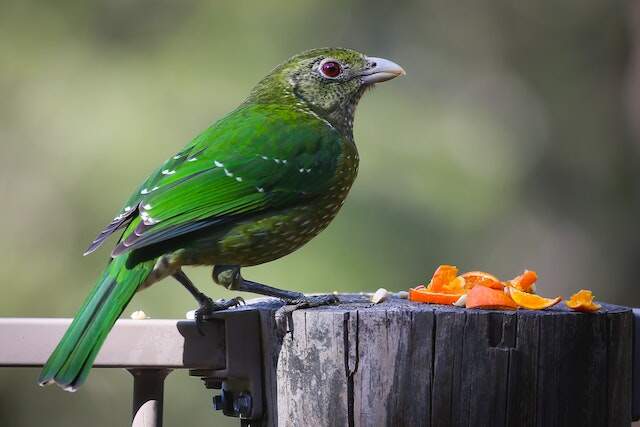
The Green Catbird, also known as the New Caledonian Whistler, is a small bird species found exclusively on the islands of New Caledonia in the Pacific Ocean. These birds have a distinct and vibrant green plumage that is used for attracting mates and camouflaging in their dense forest habitat. They have a varied diet consisting of insects, fruits, and nectar, and are known for their unique vocalizations that range from soft whistles to loud calls.
The Green Catbird’s habitat is primarily the rainforests and woodlands of New Caledonia, where they reside in the lower and middle levels of the forest canopy. The green color of their feathers helps them blend into the foliage and escape predators. In addition, males with brighter green feathers are considered more attractive to females during the breeding season.
Superb Fruit Dove
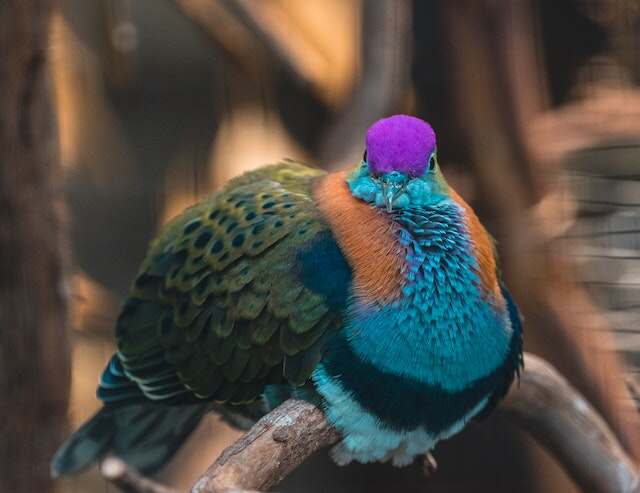
The Superb Fruit-Dove is a beautiful bird known for its vibrant green plumage, which makes it easy to spot among the dense foliage of its natural habitat. This species is found primarily in the tropical rainforests of Southeast Asia and the Pacific Islands, where it feeds mainly on fruits and insects. Its diet includes figs, berries, and various insects, which it plucks from the trees using its specialized beak.
The green color of its feathers is thought to be an adaptation to its environment, allowing it to blend in with the foliage and avoid predators. However, the bright coloration may also serve as a means of attracting mates, as it is a sign of health and vitality. The Superb Fruit Dove is a fascinating species, and its striking appearance and unique behaviors make it a popular subject for bird enthusiasts and scientists alike.
Budgerigar
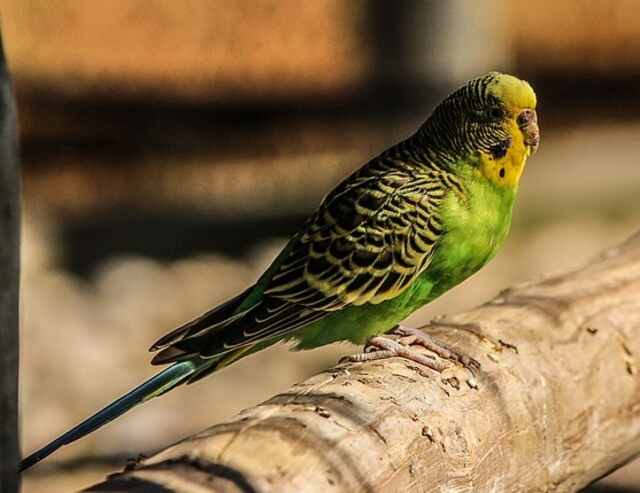
The Budgerigar, also known as the budgie, is a small parrot species that are native to Australia. They have a unique set of characteristics that make them popular pets, including their playful personalities, ability to mimic human speech, and vibrant green and yellow plumage. In the wild, Budgerigars can be found across most of Australia, inhabiting a variety of habitats, including grasslands, woodlands, and even deserts.
Their diet consists of seeds, fruits, and insects, and they have a unique adaptation that allows them to extract moisture from their food, allowing them to survive in arid environments. The green coloration of their feathers serves a dual purpose, providing camouflage in their natural habitat and attracting mates during breeding season. Overall, the Budgerigar is a fascinating bird with a range of unique adaptations that allow them to thrive in its natural environment.
Fig Parrot
The Fig Parrot is a vibrant and unique bird with stunning green feathers that set it apart from other avian species. With its small size and distinct appearance, this parrot is easy to identify in the wild. The Fig Parrot is native to Australia and can be found throughout the eastern and northern regions of the country.
Its natural habitat includes rainforests and wooded areas, where it feeds on figs and other fruits. The green feathers of the Fig Parrot serve as camouflage, helping it blend into its surroundings and avoid predators. These feathers also play a role in courtship displays, such as attracting a mate and ensuring the survival of the species.
Pacific Parrotlet

The Pacific Parrotlet, also known as the Celestial Parrotlet, is a small species of parrot that is endemic to the Pacific coast of South America. They are usually about 4 inches long, with a wingspan of around 6 inches. These birds are known for their bright green plumage, which is used for camouflage in their natural habitat. Pacific Parrotlets can be found in a variety of habitats, including forests, savannas, and grasslands.
Their diet primarily consists of seeds, fruit, and insects. Interestingly, the green color of their feathers is due to the presence of pigments called psittacins, which are unique to parrots. The green feathers are used as a form of communication, signaling aggression, submission, and breeding readiness to other birds. Overall, the Pacific Parrotlet is a fascinating bird with unique characteristics that make it an important part of the South American ecosystem.
Green Heron
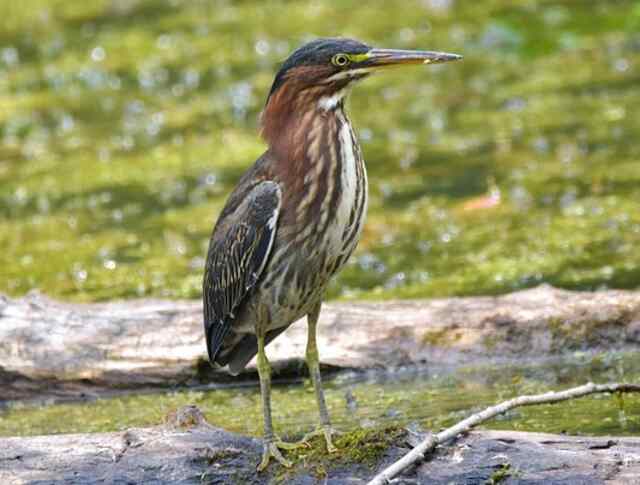
The Green Heron is a small, stocky bird with a distinctive green-black cap and rich, chestnut-colored neck. They are found throughout much of North and Central America, from southern Canada to Panama, and prefer freshwater habitats such as swamps, marshes, and streams. Their diet consists of small fish, crustaceans, insects, and occasionally small reptiles and amphibians.
The Green Heron’s green-colored feathers or plumage help them blend into the surrounding vegetation, making them difficult to spot by predators or prey. The green coloration is achieved by the presence of specific pigments in the feathers, which are used for camouflage during hunting and nesting. Green Herons are also known for their unique hunting behavior, using lures such as insects, feathers, or other objects to attract fish to the surface before striking with their sharp bill.
Tennessee Warbler
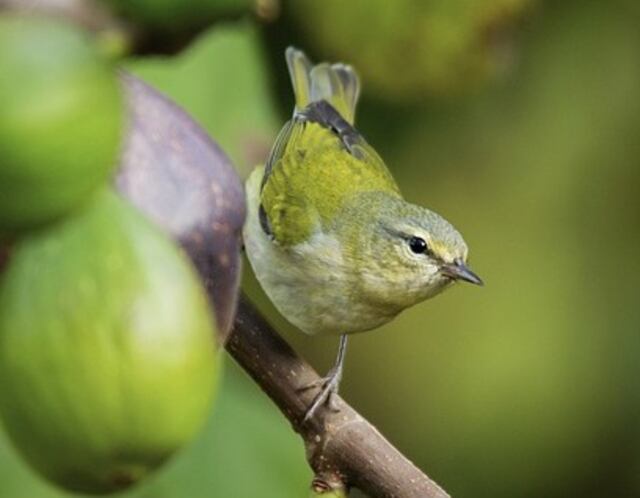
The Tennessee Warbler is a migratory songbird with striking green-colored plumage that makes them highly recognizable. They breed in the boreal forests of North America and spend their winters in Central and South America. Their habitat ranges from coniferous to deciduous forests and even urban parks. They feed mainly on insects such as caterpillars, spiders, and beetles. The green feathers serve a crucial role in both camouflage and communication.
The green coloration helps them blend in with their surroundings, aiding in avoiding predators. The male Tennessee Warblers use their green feathers to attract mates by displaying them during courtship. In summary, the Tennessee Warbler’s unique green-colored feathers play an essential role in their survival and reproductive success.
Rose-ringed Parakeet
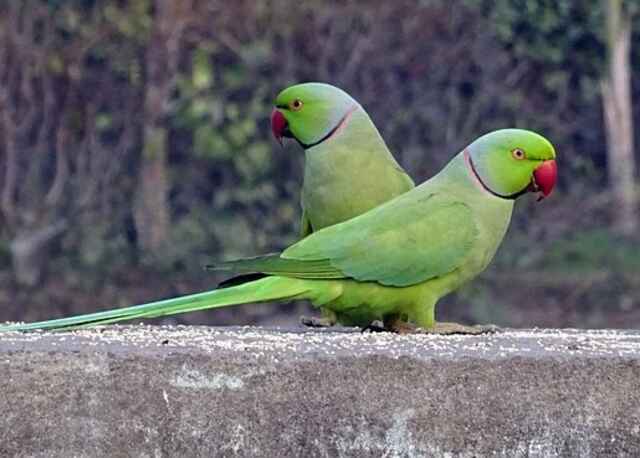
The Rose-ringed Parakeet is a stunning bird with bright green feathers that contrast with its rose-colored collar. These birds are easily identifiable by their distinctive ring around their necks, and their size of about 16 inches long. Originally from Africa and India, they are now found in many parts of the world, including Europe and the United States.
They are highly adaptable birds and can thrive in a range of habitats, from forests to urban parks. Their diet consists of seeds, fruits, and even some insects. The purpose of their green feathers is to provide camouflage and protection from predators. These birds are a joy to observe with their vibrant colors and playful personalities.
Green Jay
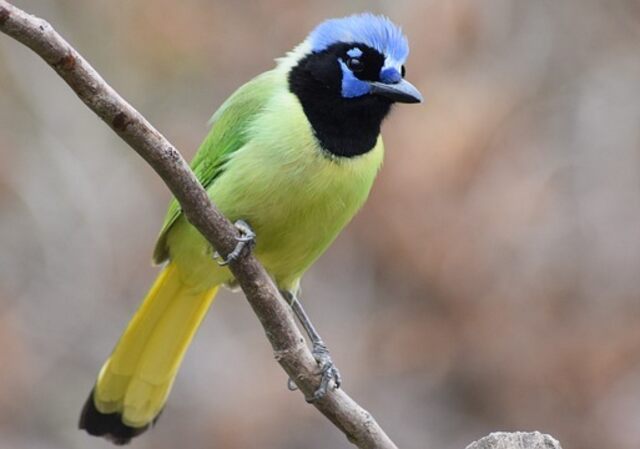
The Green Jay, known for its vibrant green plumage and striking blue markings, is a colorful bird species native to Central America and Mexico. Their range spans from southern Texas to Honduras, and they are commonly found in forested areas with thick vegetation. Their diet consists of insects, fruits, and seeds, and they are known to be omnivorous and opportunistic in their feeding habits.
The green feathers of the Green Jay are used as a form of communication and to attract mates. The color green is also an adaptation to their habitat, as it allows them to blend in with the foliage and avoid predators. Bursting with energy and personality, the Green Jay is a beloved species among bird enthusiasts and nature lovers.
Mallard Duck

The Mallard Duck is a species of waterfowl known for their striking green head and neck plumage. They have a broad range, found throughout North America, Europe, and Asia. They are commonly found in wetlands, ponds, and lakes. Mallards are omnivores, with a diet consisting of insects, plants, and small fish. The males are larger than the females and have a distinctive green head, yellow bill, and reddish-brown chest. The females have mottled brown feathers, which serve as camouflage.
The green feathers are thought to be used by males during courtship displays to attract mates, as well as to signal dominance among other males. Mallards are adaptable and can thrive in urban environments, making them a common sight in city parks and ponds.
Purple Gallinule
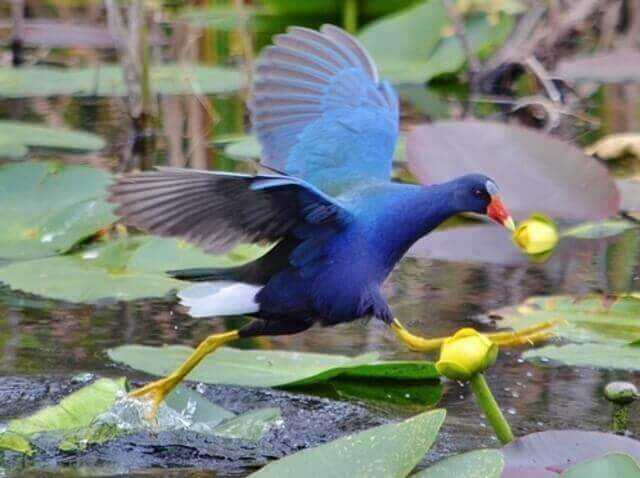
The Purple Gallinule is a highly distinctive bird with a remarkable set of characteristics. This avian species can be found in wetlands, swamps, and marshes throughout the southeastern United States, Mexico, Central America, and the Caribbean. Its diet is quite diverse, consisting of vegetation, insects, and small aquatic animals. The most striking feature of the Purple Gallinule is its vividly colored plumage, which combines purples, blues, and greens. The bird’s green feathers are produced by the structural arrangement of the feather cells, which scatter light in a way that creates the illusion of green.
This iridescence plays a crucial role in the bird’s social and reproductive behavior, including attracting mates, communicating with other birds, and establishing dominance. The colorful plumage also helps the bird blend into its environment, making it less visible to predators. The Purple Gallinule is a unique and fascinating bird that has evolved a remarkable set of adaptations for thriving in its wetland habitat.
Northern Shoveler

The Northern Shoveler is a unique duck species that stands out among other waterfowl with its long, spoon-shaped bill and striking colors. Males have an iridescent green head, chestnut-colored sides, and white breasts and bellies, while females have a mottled brown appearance. Found across North America, Europe, and Asia, the Northern Shoveler inhabits wetlands, marshes, and ponds. Its diet consists of aquatic vegetation, insects, and crustaceans.
The purpose of its green feathers has puzzled scientists for a long time, but recent research suggests that males use them to attract mates and deter rival males. This bursty behavior, along with their unique physical traits, makes the Northern Shoveler an interesting and captivating species to study and observe.
Anna’s Hummingbird

Anna’s Hummingbird is a small bird species that is found along the western coast of North America, ranging from southern Alaska to Baja California. These birds have a long, thin beak that is perfectly adapted for feeding on nectar from flowers, which makes up a significant portion of their diet. Small insects and spiders are also ingested by them as a source of protein.
Male Anna’s Hummingbirds have iridescent green plumage that they use to attract females during courtship displays. Their green feathers also provide camouflage and protection from predators. These birds are important pollinators and valuable food sources for other predators, making them an essential part of the ecosystem.
Rosy-faced Lovebird
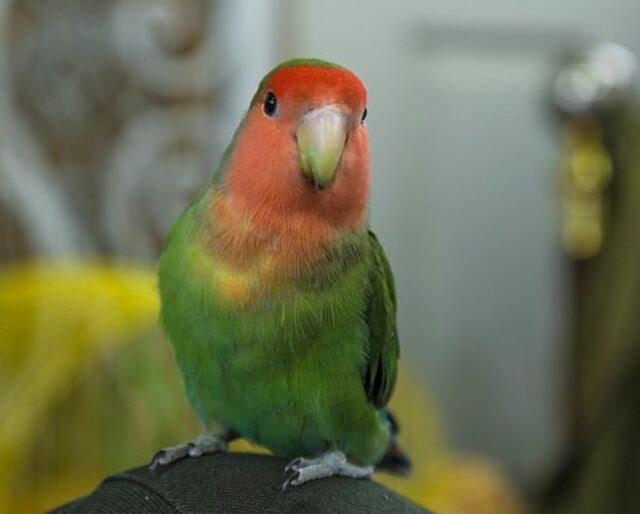
Rosy-faced Lovebirds, also known as Peach-faced Lovebirds, are a small, brightly colored parrot species native to southwestern Africa. They have vibrant plumage consisting of a mixture of pink, red, and peach shades, with a distinctive rosy patch on their face, hence their common name. Their range extends from Namibia to Angola and as far south as South Africa. These social birds typically inhabit savannas, woodlands, and scrublands, often found in large flocks.
Their diet consists of seeds, fruits, and berries, as well as insects and other small invertebrates. Despite their bright and varied coloration, Rosy-faced Lovebirds have green feathers for camouflage, allowing them to blend in with the foliage of their natural habitat. They use these green feathers to help avoid detection by predators such as hawks and eagles, which are common in their range.
Quaker Parrot
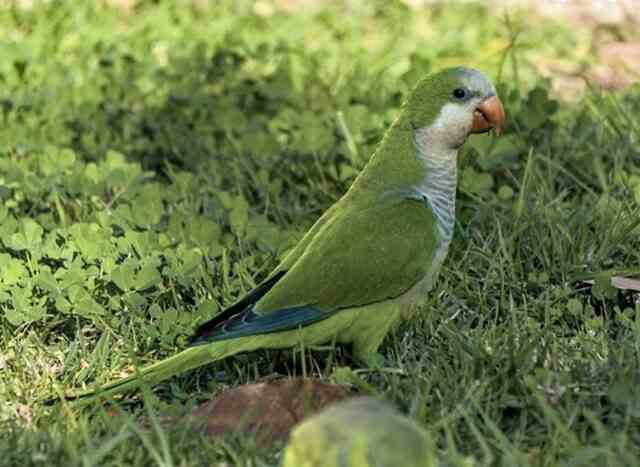
The Quaker Parrot, also known as the Monk Parakeets or Monk Parrots, is a small and lively bird native to South America. These social creatures are popular pets due to their charming personalities and excellent mimicry skills. In the wild, Quaker Parrots inhabit a wide range of habitats, including forests, grasslands, and savannas. The main components of their diet are seeds, fruits, and vegetables. One interesting characteristic of Quaker Parrots is their vibrant green feathers or plumage.
The green coloration is due to the presence of pigments in their feathers, which are used for camouflage and attracting mates. In addition to their natural uses, Quaker Parrots have also been observed using their green feathers for social communication, such as signaling aggression or submission to other members of their flock. Despite their popularity as pets, Quaker Parrots have become invasive in some areas due to their ability to adapt and thrive in a variety of environments.
Green-backed Firecrown
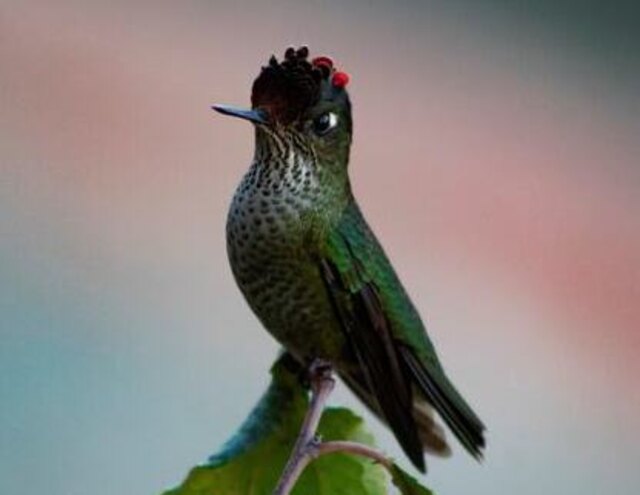
The Green-backed Firecrown is a dazzling South American hummingbird with stunning green feathers on its back. It’s easily identified by its bright green iridescent plumage, which can also appear blue or purple in certain lighting conditions. This tiny bird measures only 8cm in length, but it packs a lot of energy, buzzing around flowers and feeding on nectar.
The Green-backed Firecrown can be found in the Andes Mountains of Chile and Argentina, as well as in other parts of South America. Its preferred habitat is in humid forests, where it can find shelter and food. The purpose of the green feathers is to attract mates and to blend in with the surrounding foliage for camouflage.
Green Bee-Eater
The Little Green Bee-Eater is a bird that captivates with its vibrant green feathers and aerial acrobatics. With a slender body and long tail, this species can be easily identified by its striking appearance. They are native to Sub-Saharan Africa, the Indian Subcontinent, and Southeast Asia, and can be found in a variety of habitats including savannas, grasslands, and forest edges.
These birds are skilled hunters, feeding mainly on bees, wasps, and other flying insects. Their green feathers serve as camouflage, blending in with the foliage of their surroundings. The Little Green Bee-Eater is a beautiful and beloved bird among bird enthusiasts, admired for its unique behaviors and stunning appearance.
Shining Green Hummingbird
The Shining-green Hummingbird is a small but mighty bird that is a joy to observe. Its emerald green feathers are a standout feature that make it easy to identify, and its agility and speed only add to its appeal. These birds are commonly found in the tropical regions of South America, where they prefer to inhabit the edges of forests and gardens.
Their diet consists mainly of nectar from flowers and insects, which they can easily access with their long, slender beaks. The purpose of their green feathers is twofold: to help them blend into their surroundings and avoid predators, and to attract mates during breeding season. Overall, the Shining-green Hummingbird is a fascinating bird to learn about and appreciate.
Japanese White-eye
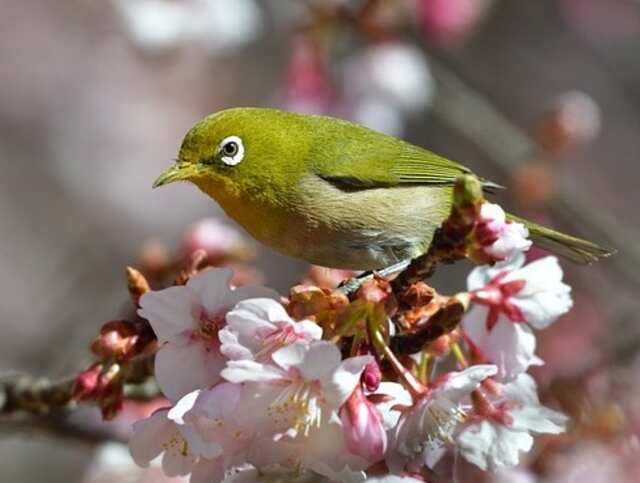
The Japanese White-eye is a remarkable bird with its striking green feathers and distinctive white eye-ring. These birds have a wide distribution range and can be found in a variety of habitats, including forests, gardens, and parks. They are also known for their adaptable diet, which includes insects, fruits, and nectar from flowers.
One of the most fascinating aspects of the Japanese White-eye is the purpose of its green feathers. These feathers provide excellent camouflage in the forest canopy, allowing the birds to blend in with the surrounding foliage and avoid predators. They also play a role in attracting mates during the breeding season, making them a key component of the bird’s survival and reproduction strategies.
Crimson-collared Grosbeak
The Crimson-collared Grosbeak (Rhodothraupis celaeno) is a medium-sized passerine bird native to Central and South America. Its distinctive crimson collar, black and white striped head, and olive-green upperparts make it easily recognizable. They inhabit forest edges, secondary growth, and coffee plantations at elevations ranging from 600 to 2000 meters above sea level.
The primary components of their diet are fruits, seeds, and insects. Interestingly, male Crimson-collared Grosbeaks have green feathers that appear turquoise or teal under certain light conditions. The green coloration is due to structural coloration, where light is reflected and refracted through microscopic structures in the feathers. This type of coloration is often used in sexual displays and is thought to be an indicator of the male’s genetic quality and fitness.
Green Broadbill

The Green Broadbill, also known as the Grauer’s Broadbill, is a small passerine bird that inhabits the rainforests of Central Africa, particularly in the Democratic Republic of Congo. This bird has a distinct emerald green plumage on its wings, back, and tail, contrasting with its bright yellow underparts.
The green color of the feathers is believed to provide camouflage in the bird’s forest habitat. The Green Broadbill feeds mainly on insects, spiders, and other small invertebrates, which it catches by hovering and snatching them mid-flight. It also occasionally feeds on fruits and berries. Due to their small size and secretive nature, Green Broadbills are not easy to spot in the wild.
Rivoli’s Hummingbird

The Rivoli’s Hummingbird, also known as the Magnificent Hummingbird, is a large, striking species found in the highland forests of Central America and Mexico. Males have bright green feathers used in courtship displays to attract females. They are adaptable and can be found in a variety of habitats, including cloud forests and gardens. Their diet primarily consists of nectar from flowers, with insects providing protein.
These hummingbirds have a unique feeding behavior, extending their bills deep into flowers while hovering. Their green feathers serve as tools to attract mates and establish dominance, as well as provide camouflage by blending in with their surroundings to avoid predators.
Green Kingfisher

The Green Kingfisher is a small but striking bird found throughout the Americas, from southern Texas to central Argentina. Its preferred habitat is near streams and rivers, where it perches on low branches or rocks, watching for prey. Its diet consists of fish, crustaceans, and insects, which it dives into the water to catch with its sharp beak. The most notable characteristic of the Green Kingfisher is its vibrant green feathers, which cover most of its body.
This coloration helps it blend in with the surrounding vegetation, making it difficult for predators to spot. Additionally, the male’s green plumage is used to attract mates during breeding season. Overall, the Green Kingfisher’s green feathers serve a dual purpose of camouflage and mating display, making it a unique and fascinating species to observe in the wild.
Conclusion
In conclusion, green-colored birds are some of the most fascinating creatures found in nature. From the vibrant and tropical macaws to the small and stealthy hummingbirds, green birds exhibit a range of physical and behavioral adaptations that enable them to thrive in diverse environments across the globe.
Whether they use their green plumage for camouflage, mate attraction, thermoregulation, or social communication, green birds are a testament to the beauty and complexity of the natural world.
As we continue to learn more about these incredible creatures, we can deepen our appreciation for the diversity of life on our planet and the important role that each species plays in maintaining a healthy and thriving ecosystem.
Related Post: 16 Birds with Colorful Beaks: See Nature’s Paintbrush!

